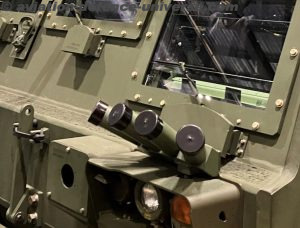Moscow. 17 October 2018. The Central Scientific Research Institute of Precision Engineering (TSNIITOCHMASH), part of the Rostec, has created a 9x21mm pistol that may replace the legendary Makarov handgun. The new pistol is being tested at ranges. The tests are expected to be completed in December 2018.
The new firearm is developed for the benefit of the Ministry of Defence of the Russian Federation and law enforcement services. It should replace the Makarov pistol (PM) which is in Russian military and police service. PM is also the main personal weapon of officers of the armed and security forces in former member-countries of the Warsaw Pact, as well as in China.
“The new pistol for the Ministry of Defence is being tested at ranges. According to a directive of the Ministry of Defence, official tests are scheduled to be completed in December 2018. Then a decision on its supply for the Russian Armed Forces will be made,” said Albert Bakov, General Director of TSNIITOCHMASH.
The Makarov semi-automatic pistol was adopted into service in 1951. While developing it, Nikolay Makarov, a Soviet firearms designer, used the system of the Walther PP, produced since 1929, as a basis. However, the designer significantly improved the pistol: he simplified the design and made it more solid and less dependent on external conditions.
“This project proves again that Russia has all knowledge and capabilities that are necessary to create high-quality small arms, including short arms. Such a product requires a wide range of expertise from basic sciences to metallurgy. Many countries with developed machine industries can’t afford to develop their own pistols. There is no doubt that the project of our specialists will be noticed on the market,” said Sergey Abramov, Conventional Armament, Ammunition and Special Chemistry Cluster Industrial Director of the Rostec.
Rostec implements a large-scale development program of the Armament cluster in accordance with the approved Strategy. The latter implies the average annual growth of revenue by 17% in roubles up to 2025, as well as increasing operational efficiency and entry into global markets.





























































































































